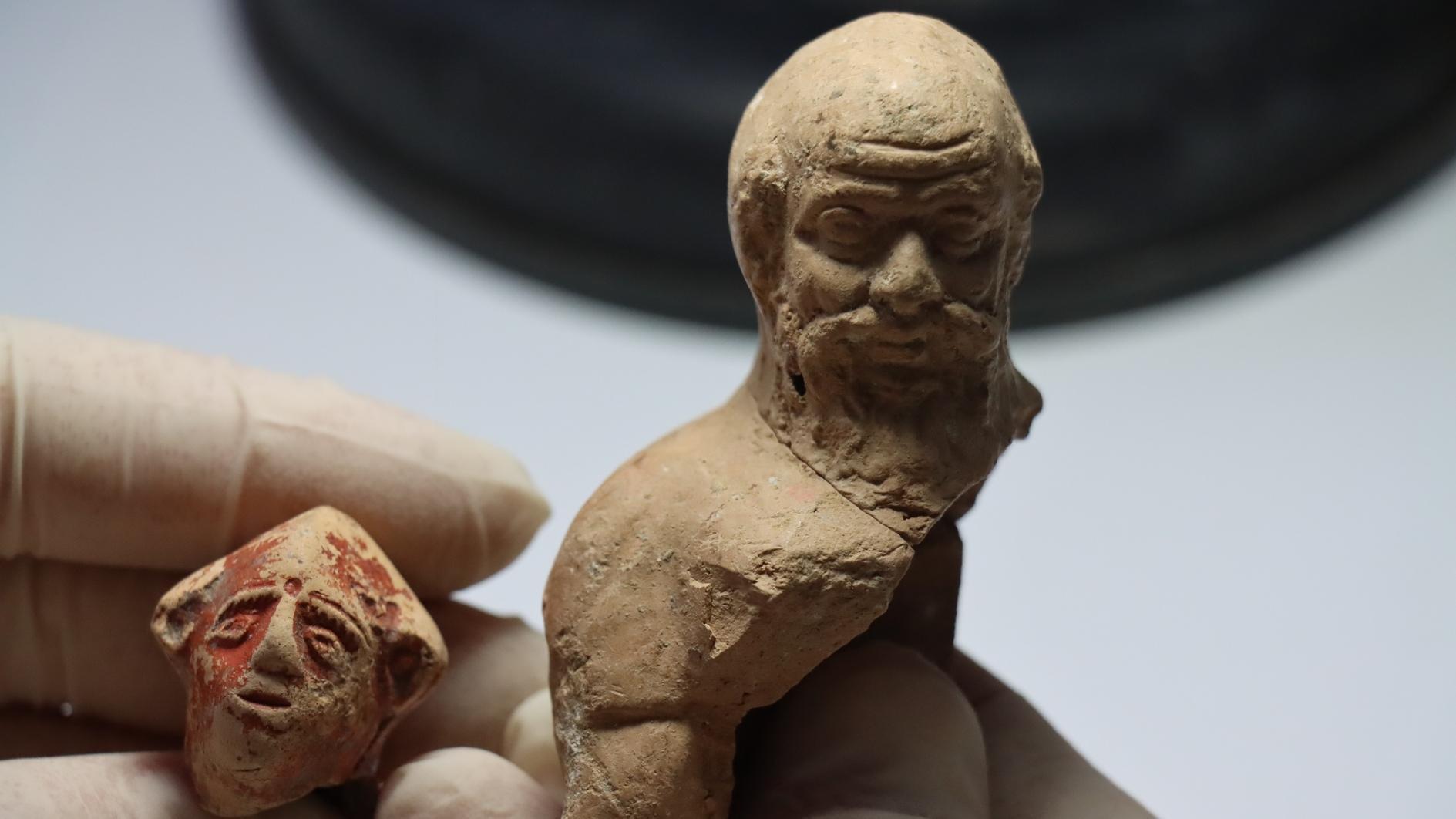Figurines found around ancient hippodrome
HATAY

Two figurine fragments have been unearthed during archaeological excavations carried out around the Antakya Ancient Hippodrome in the southern province of Hatay.
Excavations focused on the area referred to as the "palace area" in the hippodrome located in Antakya district's Küçükdalyan neighborhood.
During excavations led by Professor Hatice Pamir, a faculty member of the Archaeology Department at Hatay Mustafa Kemal University, a 20-person team uncovered two fragments of terracotta figurines while working to reveal the urban fabric of Ancient Antakya.
In the team's initial examination, it was determined that the piece, whose head and part of its body remained intact, depicted philosophers referred to as "sophists" in the Ancient Age and belonged to the Early Hellenistic period, dating between 300 and 200 B.C.
It was discovered that the head of the other figurine also dates back to the late second century B.C.
Pamir stated that the area included the hippodrome, as well as the temple and palace complex.
Stating that they had found terracotta figurine fragments from the Hellenistic period for the first time during archaeological studies, Pamir said: "One of the artifacts is a figurine fragment depicting individuals known in the Ancient Age as 'sophists,' who conveyed intellectual knowledge as philosophers and itinerant educators. We know that Ancient Antakya has always been prominent with its intellectual institutions. The emergence of a Hellenistic Period artifact is extremely important in terms of demonstrating that intellectual education was conducted during that era."
Pamir explained that they determined the artifact was not made with a mold but rather created freely by an artist.
Emphasizing the importance of the other finding, Pamir said: "We evaluate that the head, which we assess to belong to the late second century B.C., might be part of an object used within a residence or a child's toy."
Pamir noted that the fragments have been taken under preservation at the Hatay Archaeology Museum.
















